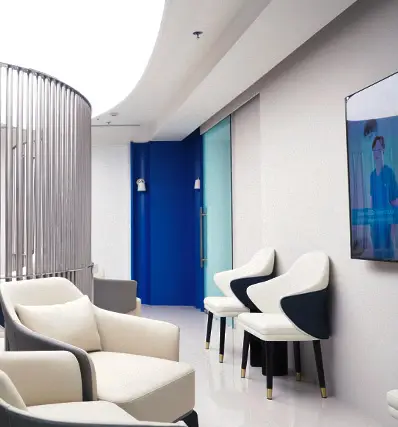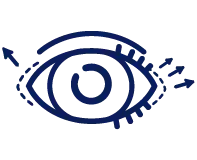Upper Eyelid Surgery
Double-eyelid surgery can be performed with 3 techniques
1. Long Incision Techniques
This method corrects hooded lids, drooping outer corners and loose upper-lid skin, while creating a new crease for patients with monolids, uneven eyelid folds or hidden double lids. An incision is made from the inner to the outer canthus of the upper lid, and the new crease is secured with permanent sutures.
This technique is ideal for patients who have a significant amount of excess skin or thick skin. The long incision allows the surgeon to remove redundant skin and fat with precision, producing a well-defined, natural-looking crease.
Advantages of the Long Incision Technique
- Precisely corrects hooded lids or hidden creases.
- Creates a well-defined, permanent eyelid fold.
- Rejuvenates and enhances the overall eye shape.
- Allows removal of excess fat and do the ptosis repair at once.
Who is full-incision Long Incision Technique suitable for?
- Individuals aged 30 and above who have the excess skin.
- Those with excess upper-lid fat or drooping skin that obscures the natural crease.
- Patients who have previously undergone double-eyelid surgery but still have an indistinct or hidden fold.
- Anyone seeking long-lasting results and willing to accept a slightly longer recovery period than with other techniques.
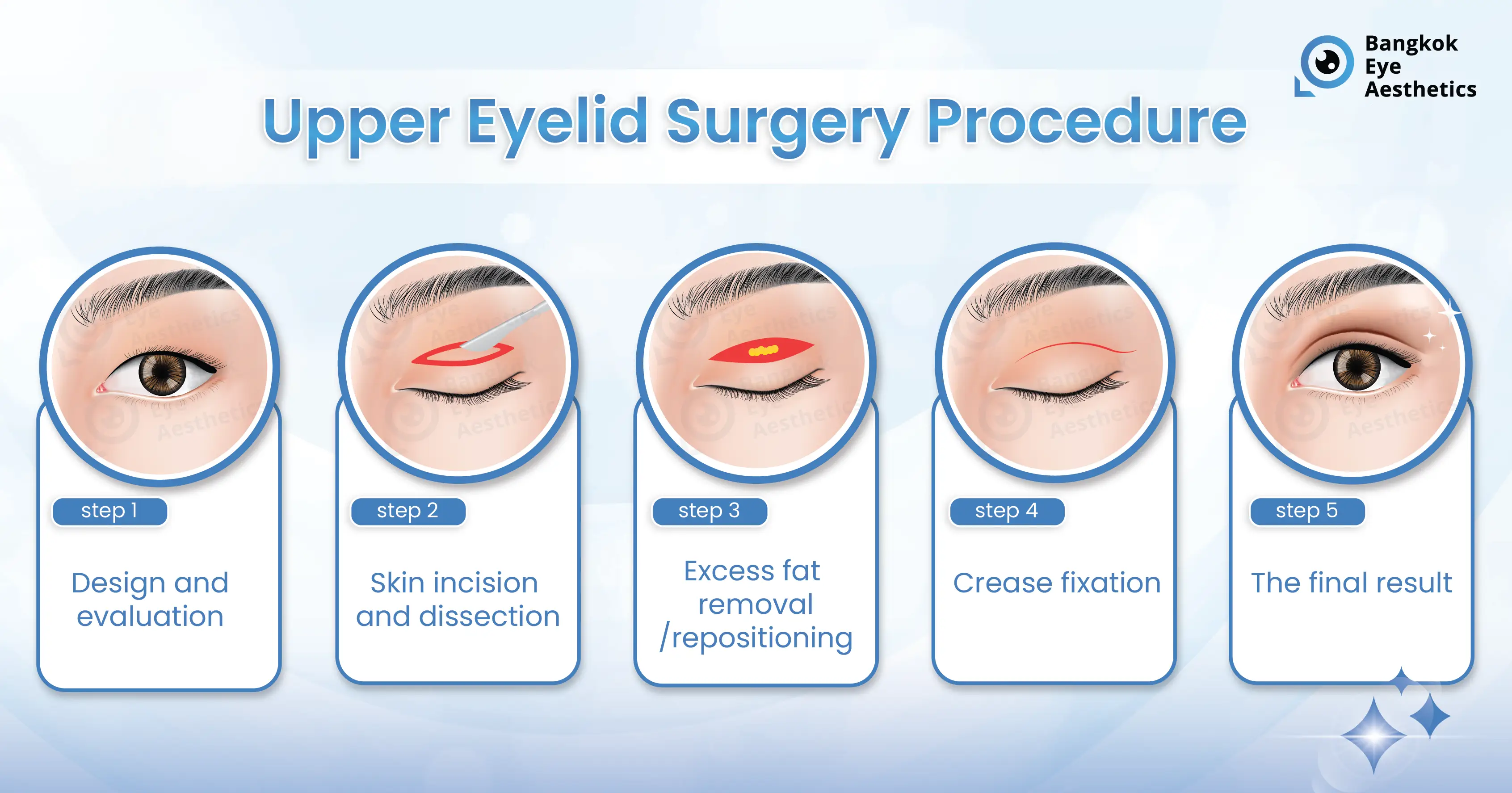
2. Short Incision Techniques
Short-incision double-eyelid surgery is designed to create a new crease for younger patients who have monolids, uneven folds, or a hidden double eyelid. A small incision (approximately 10 millimetres long) is made in the central portion of the eyelid, and the new crease is secured with permanent sutures.
Because the incision is minimal, this technique is popular among patients who do not yet have significant upper-lid laxity. The smaller wound reduces tissue trauma, shortens recovery time, and allows the scar to be concealed within the new fold for a natural-looking result.
Advantages of the Short Incision Technique
- The scar is well concealed within the eyelid fold.
- Faster healing and a shorter recovery period.
- Ideal for those who want a natural-looking crease that is not overly high.
- Minimises the risk of hypertrophic, visible scarring.
Who is the Short Incision Technique suitable for?
- Younger individuals, especially those in their 20–30 years.
- People with thin upper-lid skin and minimal excess fat or skin.
- Those with monolids or uneven eyelid folds.
- Anyone who wants to create or refine a crease without a long incision.
3. Non Incisional Technique
The non-incisional double-eyelid procedure is designed for younger patients with thin upper-lid skin who have monolids, uneven folds, or hidden creases. The surgeon creates a new eyelid crease by passing sutures through the upper lid at approximately 5–6 points, depending on each individual’s anatomy.
Our ophthalmic surgeon evaluates every case personally and selects the most appropriate technique to address each patient’s specific concerns.
Advantages of the Non Incisional Technique.
- No scalpel needed, so tissue trauma is minimal.
- Fast recovery; the tiny puncture sites heal rapidly and are barely visible.
- No stiches off
- No long scar is left on the upper lid.
- Ideal for patients who are still undecided about committing to a permanent, full-incision crease.
Who is the Non Incisional Technique suitable for?
- Younger patients.
- Patients with minimal eyelid laxity and no excess fat.
- Anyone who wants a natural-looking crease that is not thick or overly high.
- Those seeking quick results with minimal downtime.
- People who prefer not to have a long scar on the upper eyelid.
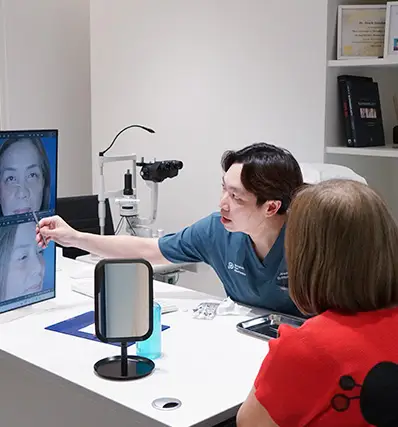
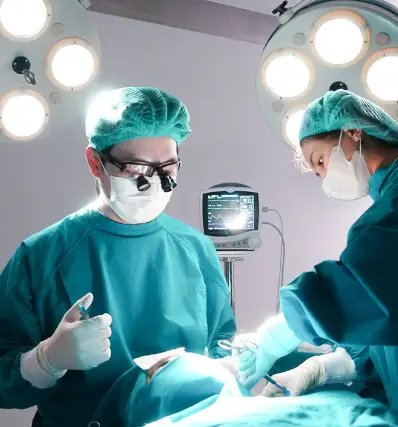
Before & After
Results may vary for each individual.
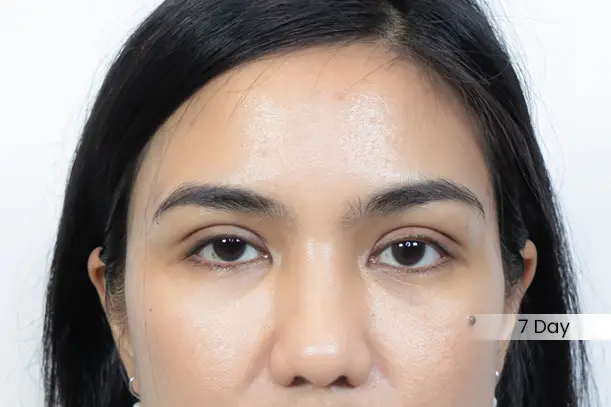

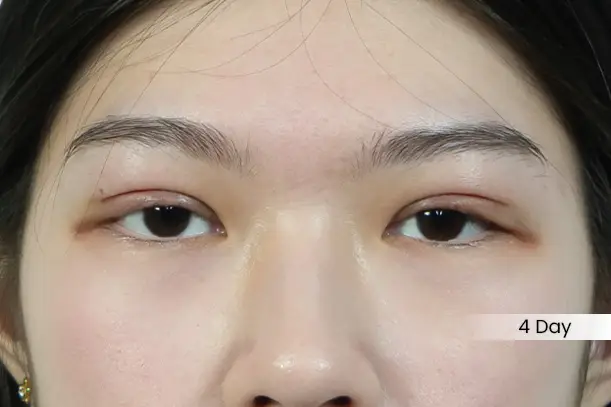


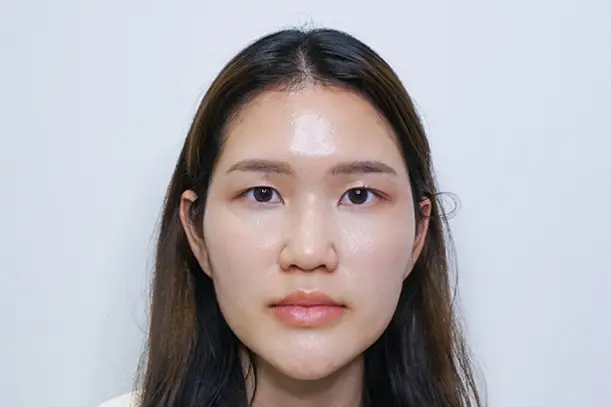

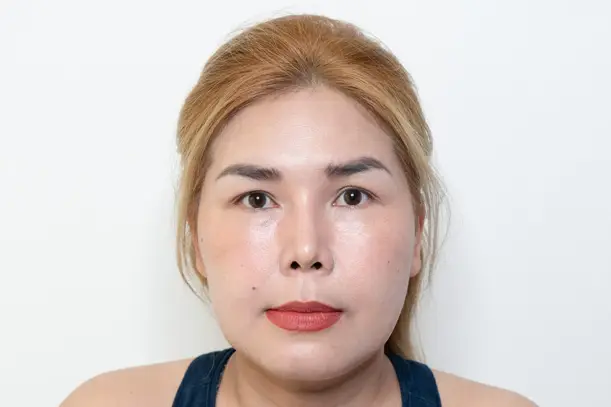
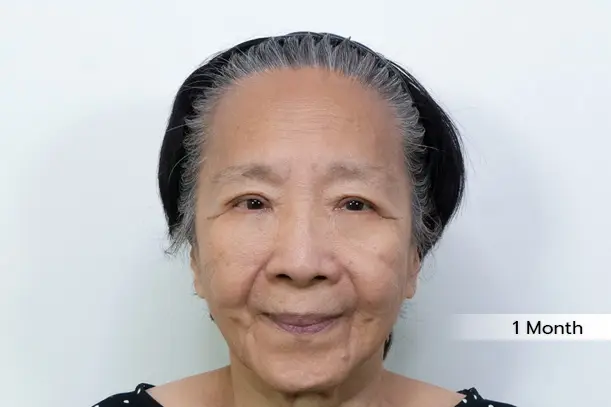

Double Eyelid Surgery Procedure by an Ophthalmologist at Bangkok Eye Aesthetics (BEA Clinic)
At BEA Clinic, all procedures are performed exclusively by board-certified ophthalmologists to ensure both safety and precision in the results. The steps of the double eyelid surgery include:
Eyelid Evaluation by an Ophthalmologist
The surgeon will assess the characteristics of the eyelids and eyelid muscles to determine the most appropriate technique and design a natural-looking eyelid crease tailored to each individual.
Preoperative Preparation
Our medical staff will conduct a health history interview and physical examination. Patients are required to provide complete and accurate information to ensure the safest surgical outcome.
During the Surgery
- The procedure is performed under local anesthesia without general anesthesia.
- The double eyelid surgery typically takes about 40–60 minutes, depending on the chosen technique and case complexity.
After the Surgery
- No overnight stay at the clinic is required; patients may return home the same day.
- The average recovery period is approximately 5–7 days.
- Swelling and bruising are common in the initial days and usually improve gradually within 1–2 weeks.
- The ophthalmologist will schedule suture removal around Day 5–7 post-surgery.
Follow-Up Care
The ophthalmologist will provide close postoperative monitoring and personalized care instructions to ensure optimal and long-lasting results.
Preoperative Instructions for Double Eyelid Surgery
To ensure a smooth and safe double eyelid surgery, patients are advised to follow these guidelines:
- Inform the medical staff of any underlying health conditions, current medications, and any known drug allergies.
- Discontinue the use of certain vitamins and medications, such as aspirin, vitamin E, ginseng, or any drugs that affect blood clotting, for at least 7 days prior to the procedure.
- Avoid wearing makeup or applying skincare products on the eyelids on the day of surgery.
- Prepare sunglasses and a wide-brimmed hat to wear after the procedure to minimize light sensitivity and irritation.
- If you wear contact lenses, remove them and avoid use before and after surgery as advised by your doctor.
- Refrain from smoking and consuming alcohol for at least 3 days prior to the surgery to promote faster wound healing.
Postoperative Care After Double Eyelid Surgery
Proper self-care following double eyelid surgery can help reduce swelling, promote faster recovery, and minimize the risk of complications.
- Apply cold compresses continuously during the first 48–72 hours to help reduce swelling and bruising.
- Sleep with your head elevated, using two pillows if necessary, for the first 3–5 days to improve circulation.
- Avoid rubbing your eyes and refrain from applying makeup to the eyelid area until the wounds are fully healed.
- Avoid strenuous activities, such as heavy lifting or intense exercise, during the first week after surgery.
- Clean the surgical site and apply eye drops strictly as prescribed by your doctor.
- Avoid direct sunlight and exposure to heat sources, such as saunas or steam rooms, for at least 2 weeks.
- Attend all scheduled follow-up appointments for proper monitoring and to receive further medical advice.
Why Choose Us
Because the eyes are the focal point of the face, double eyelid surgery should not be solely about aesthetics. It requires a deep anatomical understanding and specialized expertise. At BEA Clinic, we believe in personalized eyelid design—emphasizing safety, suitability, and natural beauty.
What Sets Double Eyelid Surgery at Bangkok Eye Aesthetics (BEA Clinic) Apart
- Specialized Care by Ophthalmologists
Every procedure is performed by an ophthalmologist with in-depth knowledge of ocular anatomy and eyelid muscles, allowing for precise and safe eyelid design and correction. - Comprehensive Techniques for All Concerns
We offer a full range of techniques including full-incision, mini-incision, and suture methods to meet the individual needs of each patient, with a focus on natural-looking and long-lasting results. - Results Harmonized with Your Facial Features
More than just creating a new eyelid crease, our ophthalmologists design the eye shape to harmonize with your overall facial structure for the most flattering outcome. - Attention to Detail at Every Step
We prioritize patient safety, comfort, and satisfaction—starting from facial analysis and personalized surgical planning to attentive postoperative care. - Clean, Private Facility in a Prime Location
Our double eyelid clinic is conveniently located in the heart of Asoke, offering a private, hygienic environment with premium amenities to ensure a comfortable and elevated experience.
Meet Our Ophthalmologist
Dr. Jirach Jatechayanon
Dr. Jirach Jatechayanon is an ophthalmologist specializing in oculoplastic surgery. He has extensive experience and expertise in double eyelid surgery, ptosis correction, and periorbital skin rejuvenation procedures.
- Bachelor of Medicine, Rangsit University
- Board Certification in Ophthalmology, Khon Kaen University
- Certificate of Advanced training in double eyelid surgery under the guidance of a Dr. Cheangariyavong, Facial Plastic and Reconstructive Surgeon
- Certificate of Advanced training in double eyelid surgery through the InternationalFellowship in Advanced Aesthetic Science program (IFAAS), South Korea
Frequently Asked Questions (FAQs)
1. What’s the difference between full-incision and mini-incision double eyelid surgery?
The full-incision technique is ideal for individuals with excess upper eyelid skin or significant fat accumulation, while the mini-incision method is better suited for those with minimal eyelid fat and no major skin sagging.
2. What are the advantages of having double eyelid surgery performed by an ophthalmologist?
Ophthalmologists have an in-depth understanding of eye anatomy and eyelid muscles, enabling them to perform surgery with precision and safety. This is especially important in complex cases such as uneven eyelids or hidden creases (monolids).
3. How long is the recovery period after double eyelid surgery?
The average recovery time is around 5–7 days, depending on the technique used. Non-incisional or suture-only methods generally allow faster recovery, while the full-incision technique may require a slightly longer healing period—typically no more than 1–2 weeks.
4. Will the results of double eyelid surgery look unnatural?
Not at all. When performed with the appropriate technique and personalized design, the results appear natural and harmonize well with your overall facial features.
5. Will there be visible scarring after double eyelid surgery?
Modern surgical techniques allow for well-concealed incisions. Suture-only and subbrow approaches leave minimal to no visible scarring once healed. Additionally, skilled surgeons carefully plan the incision lines and close the wounds with precision to ensure scars fade naturally over time.
6. Where is the clinic located?
BEA Clinic is located in Asoke, Bangkok. It’s easily accessible via both BTS and MRT stations.
Procedures that goes well with this service
Request for Surgical Recommendation
Bangkok Eye Aesthetics : Your destination for eyelid surgery by a highly-skilled board-certified eye surgeon
Request Free Consultation

